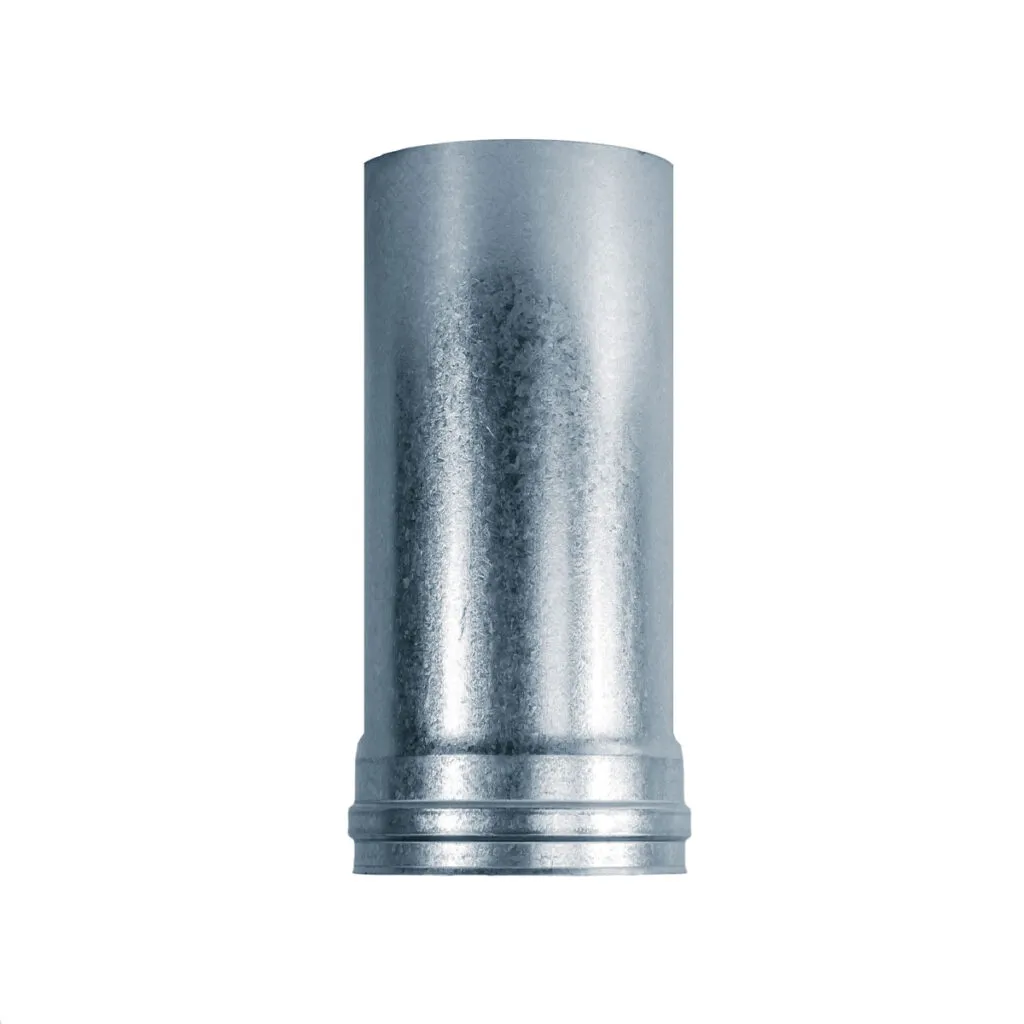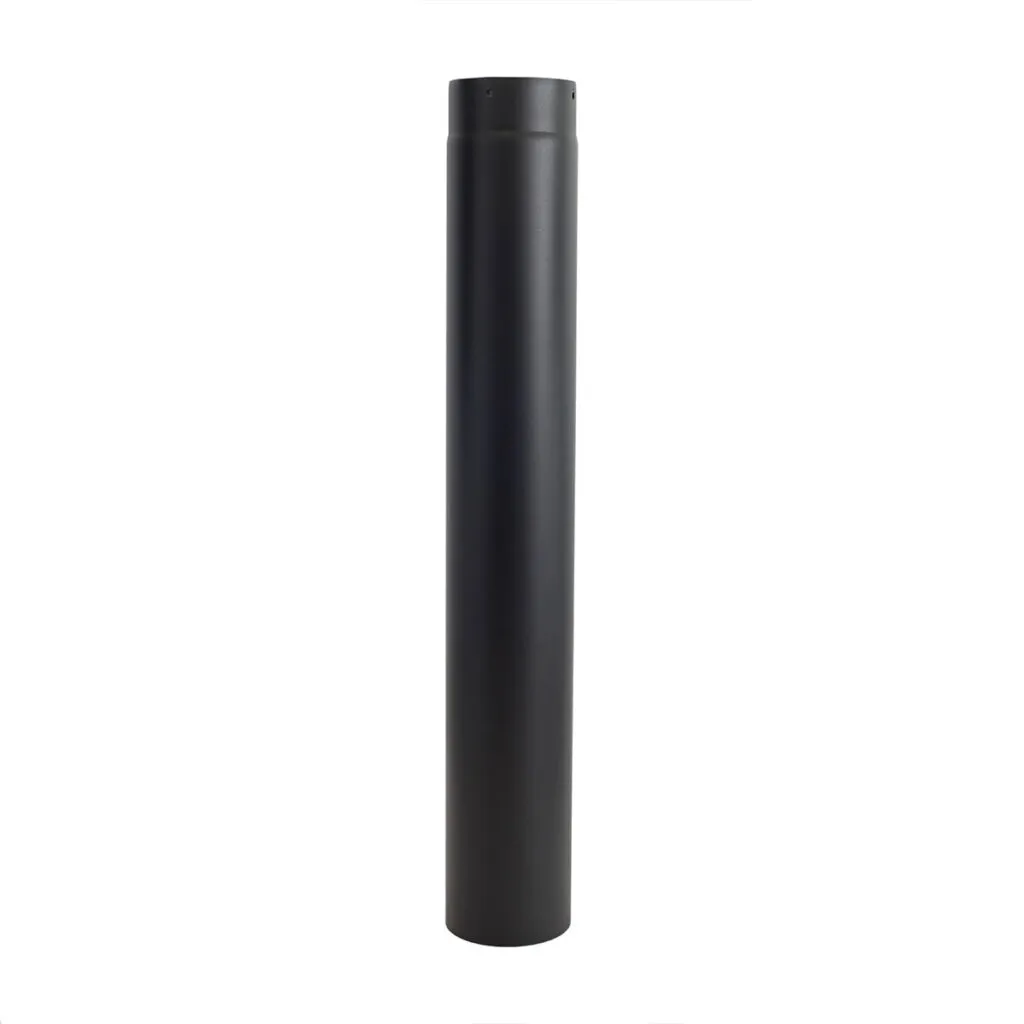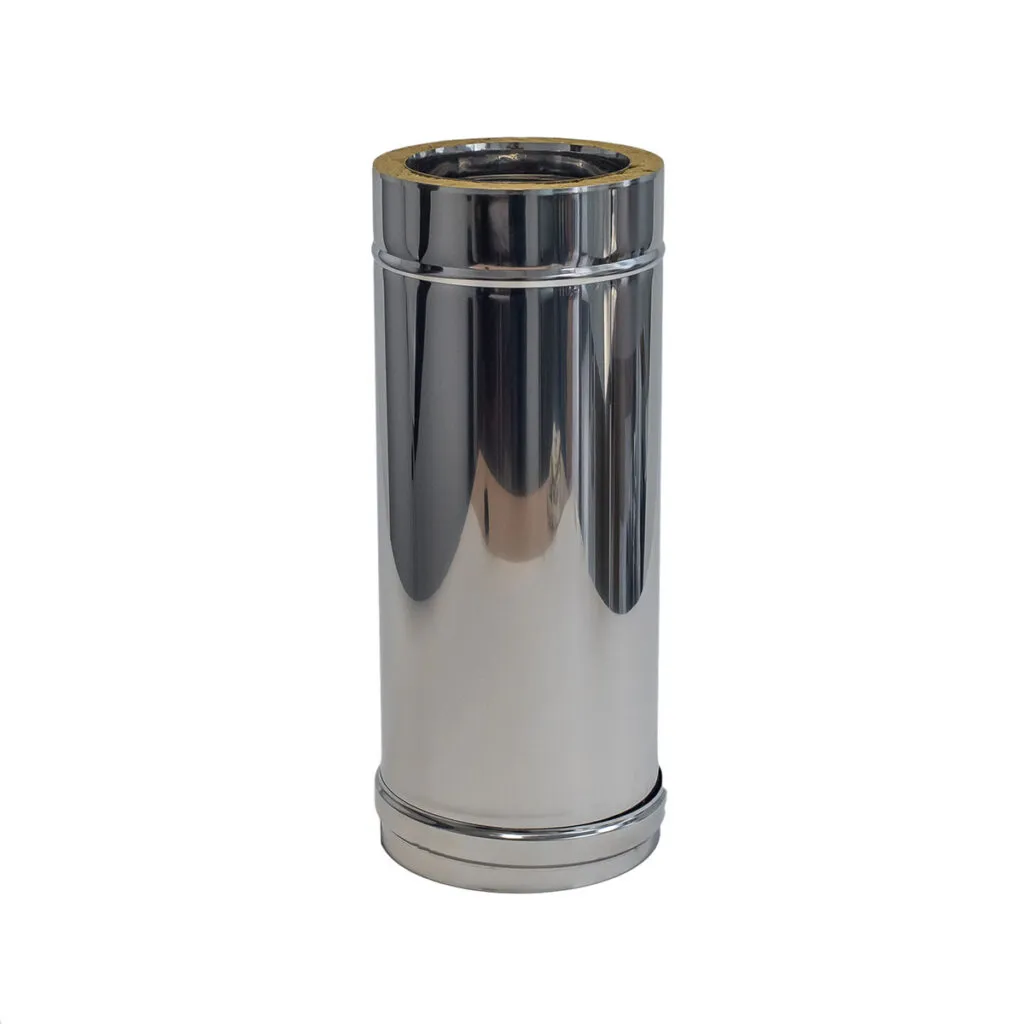Discovering the right choice for tubes in stoves and fireplaces is essential to ensure efficient and long-lasting performance. In this article, we will explore the distinguishing characteristics of galvanized, vitrified and stainless pipes.
From corrosion resistance to aesthetic considerations, we’ll break down the advantages and disadvantages of each material. If you’re considering a new installation or upgrade, don’t miss this informative guide to make the best decision!
Galvanized pipes
Galvanized pipes are steel pipes that have been coated with a layer of zinc to provide protection against corrosion.
The galvanizing process involves immersing steel pipes in a bath of molten zinc, or it can also be by spraying zinc, the result is an outer layer of zinc that acts as a protective barrier helping to prevent corrosion.

Advantages of galvanized pipes
- Corrosion resistance: Galvanizing provides a protective zinc coating that helps prevent corrosion.
- Ease of installation: This type of pipe is relatively easy to work with and install.
- Price: It has a lower price than the other tubes, so it can be adapted to different budgets.
Disadvantages of galvanized pipes
- Emission of toxic vapors: When heated, galvanized pipes can release toxic vapors, such as zinc oxide, which could be harmful to health.
- Loss of zinc over time: Although galvanization provides protection, over time this layer may wear away, which could lead to corrosion of the metal.
- Temperature limitation: Galvanized pipes may have limitations in terms of the extremely high temperatures they can withstand.
- It does not tolerate being exposed to the elements: Normally for the use of this pipe it is recommended that it not be outdoors, if not covered, so that the characteristics of this pipe persist for a longer period of time.
Vitrified tubes
Vitrified tubes, in general terms, refer to tubes coated with a vitreous material, such as enamel or ceramic, usually black in color.
It is very important to maintain these components in good condition to ensure optimal operation of the wood heating system and prolong the life of the equipment.

Advantages of vitrified tubes
- Aesthetics: Vitrified pipes have an elegant and aesthetic finish that can enhance the overall appearance of the fireplace or stove.
- Corrosion resistance: Like galvanized pipes, these are resistant to corrosion, but do not have the disadvantage of expelling some toxic vapors, so in addition to resisting, they do not generate noxious fumes.
- High thermal performance: These tubes have a high performance, helping to maintain a constant and efficient temperature.
- Easy cleaning: The vitreous material surface of the tubes helps prevent soot and other residues from being retained.
- Duration of the color: The color or tone will last for a long time, since it will not be affected by high temperatures that may be reached.
- Weight: They are lighter than galvanized pipes.
Disadvantages of vitrified tubes
- Initial cost: Vitrified pipes are somewhat more expensive than galvanized pipes, but they also have many more features.
- Protective coating: Due to the emission of combustion gases and soot, it can gradually lose its protective coating.
- Watertightness: It may have some watertightness problems if it is not installed correctly.
Stainless steel pipes
Stainless steel tubes are tubular elements made of stainless steel, a type of steel containing chromium, nickel and other elements that give it unique properties.

Advantages of stainless steel pipes
- Corrosion resistance: Stainless steel is highly resistant to corrosion, making it a durable and suitable pipe in environments where moisture is present.
- Durability: Stainless steel pipes are known for their strength and durability, contributing to a longer service life.
- High heat resistance: Stainless steel has a high resistance to heat, making it ideal for applications in stoves and fireplaces that generate high temperatures.
- Low thermal conductivity: Stainless steel tends to have low thermal conductivity, which means that the tubes can help retain heat inside the stove or chimney.
Disadvantages of stainless steel pipes
- Initial cost: This type of pipe is usually the most expensive, but it is the most resistant and has the most features.
- Weight: They are usually a little heavier than the previous tubes, not much more since one meter of length will have a weight of 3.48kg, less than the vitrified tube which is 3.64 and less than the galvanized tube which is 3.12kg.
- Discoloration: This type of pipe may become discolored, this is due to the fact that the flue gases passing through the pipe may contain soot particles.
Which is the best tube for you?
In choosing between galvanized, vitrified and stainless steel pipes for your stove or fireplace, the decision will depend on a number of key factors.
Galvanized pipes offer corrosion resistance and are economically viable, while vitrified pipes provide an aesthetic touch and ease of cleaning. On the other hand, stainless steel pipes are noted for their durability, heat resistance and low thermal conductivity.
The best option for you will depend on your specific needs and preferences. If you are looking for a durable, corrosion-resistant solution at a reasonable cost, galvanized pipe may be the right choice.
For those who value aesthetics and ease of cleaning, vitrified tubes may be the ideal choice. Meanwhile, if you are looking for maximum durability, heat resistance and a long-term investment, stainless steel tubes may be your best choice.
Ultimately, consider your priorities in terms of strength, aesthetics, and budget when making your decision. Be sure to meet the specific requirements of your project and follow the manufacturer’s recommendations to ensure safe and efficient performance of your stove or fireplace.

